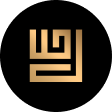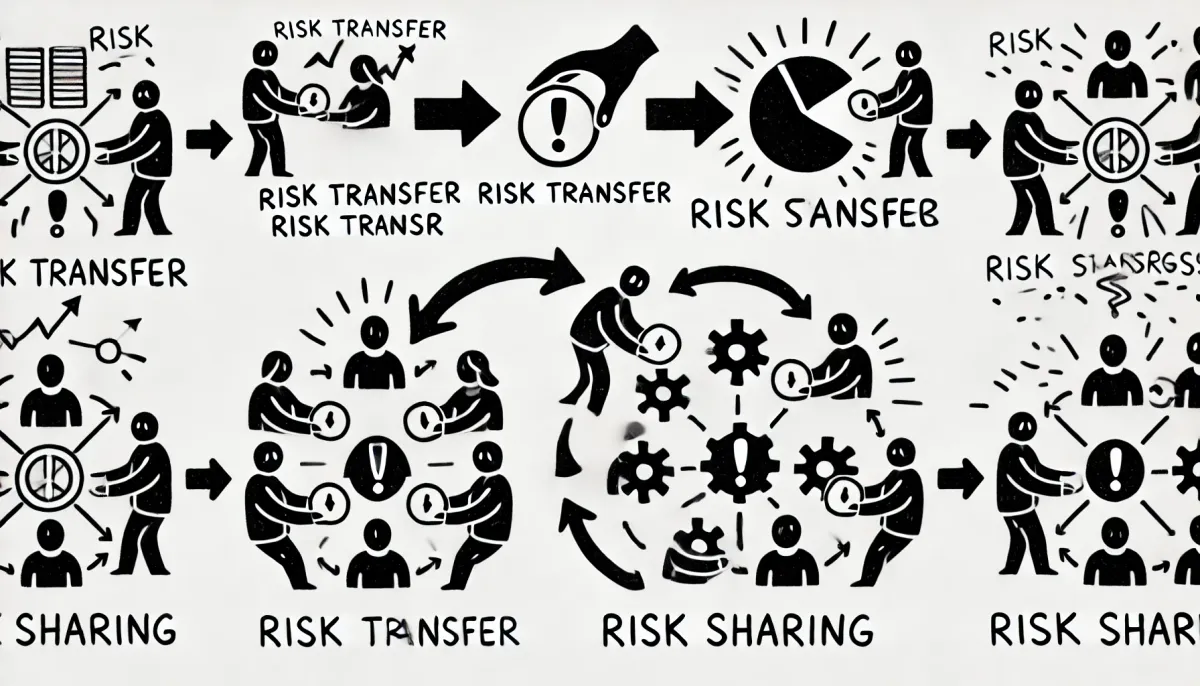Traditional finance often depends on transferring risk through insurance and derivatives, while Islamic finance emphasizes risk sharing, aligned with ethical and equitable principles. This approach—integral to contracts like mudarabah (profit-sharing) and musharakah (joint venture)—prioritizes the distribution of both profits and losses among parties, fostering a more resilient and ethically grounded financial ecosystem. Below, we’ll explore these two contrasting approaches, supported by the latest data from 2023-2024.
1. Risk Transfer in Traditional Finance
Traditional finance uses risk transfer mechanisms to protect investors and institutions from potential financial losses. Tools like insurance and derivatives (e.g., futures, options, credit default swaps) shift financial risk from one party to another. While this has advantages, an over-reliance on such mechanisms can increase systemic vulnerabilities, as evidenced by the 2008 financial crisis.
Key Data Points:
- Global Insurance Market: In 2023, the insurance market reached $6.5 trillion in premiums, reflecting its pivotal role in global finance.
- Derivatives Market: The OTC derivatives market rose to an estimated $640 trillion by the end of 2023, underscoring the extensive use of these instruments in risk management.
While effective for certain applications, risk transfer mechanisms can lead to complex, opaque systems that obscure true risk exposure, posing challenges for long-term stability.
2. Islamic Finance: Risk Sharing as a Foundation for Stability
Islamic finance, following Shariah law, promotes risk-sharing over risk transfer, fostering transparency, shared responsibility, and equitable investment. By prioritizing shared risk, Islamic finance discourages speculative behavior and excessive debt, instead creating structures where profits and losses are borne equitably by all parties involved.
Key Data Points:
- Global Islamic Finance Assets: As of 2023, Islamic finance assets total $3.2 trillion, with a forecast to grow to $3.5 trillion by the end of 2024 (5.5% CAGR).
- Sukuk Issuance: In 2023, sukuk issuance reached $180 billion and is expected to surpass $200 billion in 2024, meeting the growing demand for Shariah-compliant investments.
This shared approach encourages sustainable practices by tying financial growth directly to economic productivity, rather than speculative gains.
3. Financial Stability Through Risk Sharing
Risk-sharing contracts like mudarabah and musharakah establish a more stable financial framework. Unlike risk transfer-heavy models, Islamic finance’s focus on sharing losses and profits aligns incentives toward real economic outcomes and discourages risky leveraging.
Comparative Stability Data:
- Non-Performing Loans (NPLs): In 2023, Islamic banks averaged a 2.5% NPL ratio, compared to 3.8% in conventional banks, indicating more prudent lending practices.
- Capital Adequacy Ratios (CAR): Islamic banks hold robust CARs, averaging 18% in 2023, exceeding Basel III requirements and reflecting substantial capital buffers.
Risk-sharing promotes long-term stability, with all stakeholders equally accountable for the outcome, making this model more resilient against systemic shocks.
4. Real-World Applications of Profit and Loss Sharing
Mudarabah in Investment Funds:
Mudarabah structures are analogous to venture capital models but avoid debt or interest. For instance, Halal.io, a Shariah-compliant blockchain venture fund, leverages a risk-sharing model. The fund pools investor capital into promising Web3 and blockchain projects, providing high-growth potential within ethical constraints.
5. Transparency and Accountability in Islamic Finance
Islamic finance’s emphasis on risk-sharing extends to transparency and accountability, with blockchain technology further enhancing these principles. Platforms like Halal.io adopt blockchain to ensure full transparency in investments and uphold Shariah principles by recording every transaction in an immutable ledger.
Transparency and Technology Data:
- Blockchain in Islamic Finance: Blockchain adoption within Islamic finance has improved traceability, compliance, and investor trust.
- Smart Contracts: The use of smart contracts in Islamic finance reduces operational risks and improves transparency.
6. Comparative Chart: Risk Transfer vs. Risk Sharing
Below is a comparison between risk transfer and risk sharing based on key financial metrics, illustrating how these models differ in terms of stability, transparency, and alignment with real economic activities:
| Metric | Risk Transfer | Risk Sharing |
|---|---|---|
| Investor Risk Exposure | Limited for one party, often shifted to another | Shared between all parties |
| Systemic Stability | Vulnerable to cascading failures in crises | More stable, as risk is distributed equitably |
| Profit Alignment | Profits often earned without direct accountability | Profits and losses directly tied to outcomes |
| Speculation | High levels of leverage and speculation | Minimized speculation, focus on real assets |
| Transparency | Opaque, with complex derivatives and hedging | Transparent, as agreements are straightforward |
This model emphasizes Islamic finance’s commitment to fair and stable financial interactions, setting a precedent for resilience in the face of global economic shifts.
7. Ethical Investment and Social Impact
Islamic finance aligns closely with the global trend toward Environmental, Social, and Governance (ESG) investing. By prioritizing ethical standards and responsible financial practices, Islamic finance is naturally positioned to capitalize on the growing demand for sustainable investments.
ESG and Ethical Investment Data:
- Green Sukuk: $15 billion in green sukuk was issued in 2023, financing sustainable projects.
- SRI Commitments: Islamic finance institutions committed $20 billion to socially responsible investments in 2023, emphasizing social and environmental impact.
8. Case Study: Halal DeFi’s Shariah-Compliant Blockchain VC Fund
Halal.io exemplifies Shariah-compliant finance, operating as a micro-VC fund that follows risk-sharing principles. Through the purchase of $HDF tokens, investors have access to vetted blockchain and Web3 projects that comply with Islamic ethical standards.
- Investment Approach: Halal.io invests in Shariah-compliant projects, ensuring ethical growth without interest or speculation.
- Liquidity and Security: $HDF tokens are tradable, providing investors flexibility and transparency, with security measures like multisignature wallets in place.


